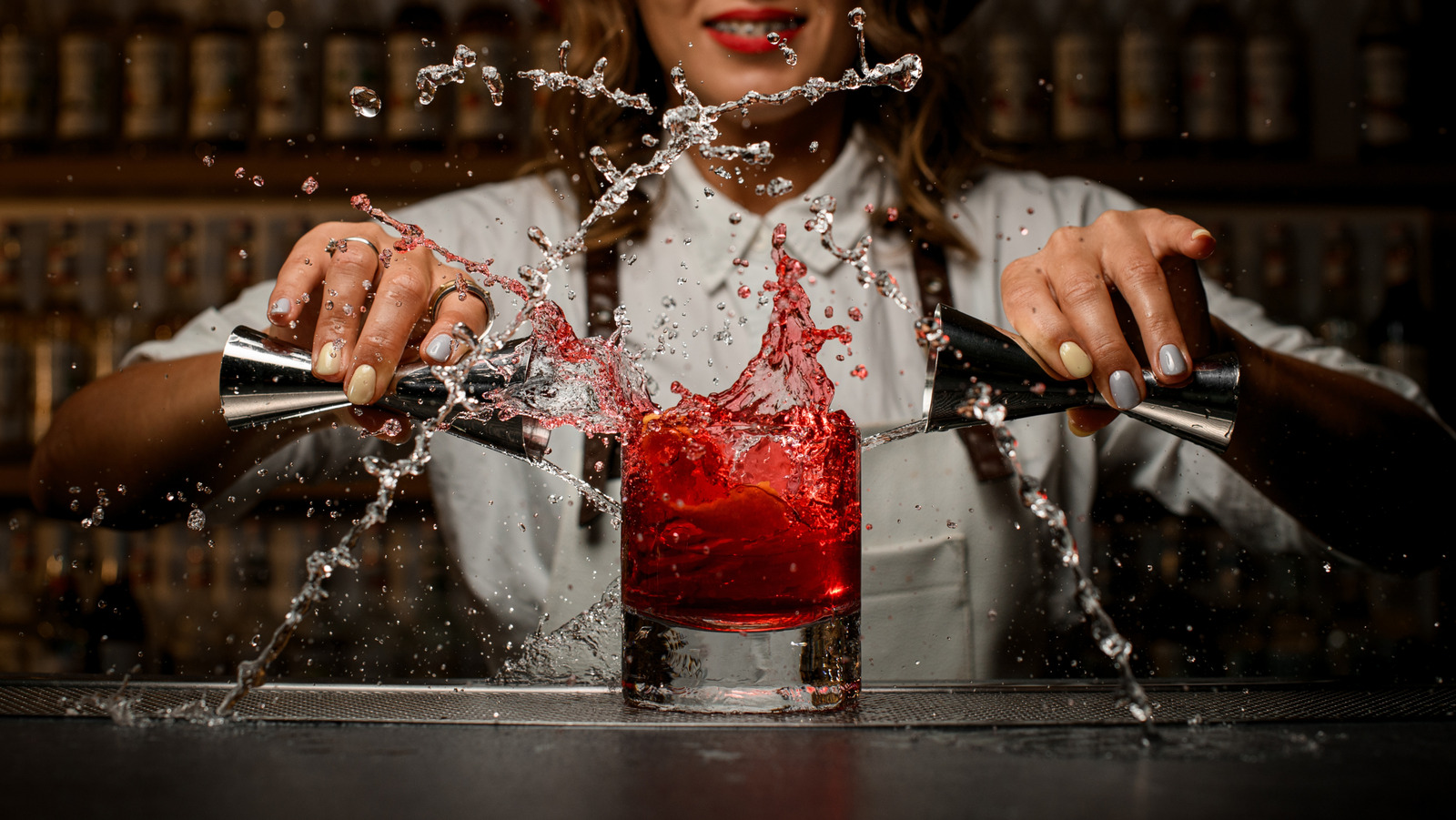Watching mixologists or skilled bartenders (there is a difference) can leave you shaking your head in wonder. They seem like they’re tossing ingredients together willy-nilly, but their expertise comes from knowing exactly how much of each ingredient to use. So how do they do it so quickly and on the fly? They are most likely thinking in terms of parts, such as one part vodka and two parts bitters. If you’re suddenly thinking, “Oh no, math,” don’t worry; you don’t need to be a math whiz to understand parts. The wording is simply a way to describe the ratio of ingredients in a drink. If you want to maintain the balance of a properly mixed cocktail, you must keep the correct ratio of ingredients, regardless of the volume.
But you don’t need to buy a cocktail set to revamp your home bar. They look great, but you don’t need a fancy jigger to get your measurements right — a measuring cup or another everyday kitchen tool can do the job. That said, the jigger (usually a silver, hourglass-looking, dual-cup measuring device) is the classic bartender tool. The most common jigger holds 1.5 ounces on one side and ¾ of an ounce on the other, so you can easily measure your parts, especially if you’re following a recipe. Then there’s the standard shot glass, which also measures 1.5 ounces. If your recipe calls for a part equal to a shot — sweet! It’s your lucky day. But again, measuring spoons and cups work fine if you don’t have a jigger or shot glass; for example, one tablespoon is roughly ½ an ounce, so you can easily convert a recipe into spoon measurements.
It’s all about proportion and balance
Using parts is not just for making a single drink; it’s a solution for any situation, even a large party. For example, if you’re hosting an impromptu party and want to make pitchers of sangria, you can easily use parts: Just decide on your measurement (such as 1 ounce, one shot glass, or 1 cup) and calculate accordingly, keeping the rest of the ingredients in proportion.
Start with small quantities until you’re comfortable, then increase the parts as needed. This way, you always maintain the right balance of flavors, whether working with a handful of guests or crafting a cocktail for yourself. Even everyday kitchen tools such as a lid or a glass can work; the vessel is less important than consistency. Once you understand how it works, measuring in parts is a practical tool that makes crafting cocktails easier, more approachable, and helps you control the ratio of ingredients to keep your cocktails perfectly balanced. With some practice, you’ll be a mixologist in no time.





